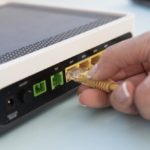
Speed Test App
Tips and Guides - 1
Learn how to get an accurate speed test
Conducting a good speed test is important because it helps you understand the actual internet speeds you’re getting from your Internet Service Provider (ISP). This information is crucial because it allows you to check if you’re getting the speeds you’re paying for, and if not, it helps you identify if there are any problems with your internet connection.
By conducting a good speed test, you can also identify if any programs or applications on your device are hogging the bandwidth and slowing down your internet speed. This way, you can close these programs and optimize your internet speed to achieve better performance.
– Sponsored Links –
Moreover, a good speed test provides you with accurate data on your download and upload speeds, which are essential for different activities such as streaming, video conferencing, online gaming, and more. You can use this data to determine if your internet speed is sufficient for your needs or if you need to upgrade your internet plan.
How can you optimize your router or modem for speed testing?
To optimize your router or modem for speed testing, you can take the following steps:
Update firmware: Make sure your router or modem has the latest firmware version installed. This can often improve performance and fix bugs that may be affecting speed.
Use a wired connection: Whenever possible, use a wired Ethernet connection instead of Wi-Fi. Wired connections tend to be faster and more stable, and eliminate the possibility of interference.
Clear the cache: Clear your browser cache before running the speed test to ensure accurate results. A cluttered cache can affect test results.
Disable other devices: Turn off other devices connected to your network that may be using up bandwidth, such as streaming devices or gaming consoles.
Close programs: Close any programs running on your computer that may be using bandwidth, such as file-sharing software or backup programs.
Disable VPN: If you’re using a VPN, disable it temporarily before running the speed test. VPNs can sometimes affect test results.
Use a reliable speed test tool: Make sure you’re using a reputable and reliable speed test tool, such as our Speed Test app. Different speed test tools may produce different results, so stick with one you trust.
By following these steps, you can optimize your router or modem for speed testing and get more accurate results.
– Sponsored Links –
– Sponsored Links –
How does the choice of web browser impact speed test results?
The choice of web browser can impact speed test results in several ways.
Firstly, some web browsers are known to be more resource-intensive than others. This means that they may consume more CPU and memory, which can affect the overall performance of the system and potentially impact the speed test results. For example, if a web browser is using up a lot of system resources, it may cause the speed test to run slower than expected.
Secondly, some web browsers may have built-in features that can affect the results of a speed test. For example, some web browsers have a feature that automatically prefetches links on a page in the background to speed up browsing. This can cause the speed test to register a higher than expected speed since the links have already been downloaded and cached.
Lastly, the version and configuration of the web browser can also have an impact on speed test results. Older versions of web browsers may not support the latest web technologies, which can lead to slower performance. Additionally, certain browser settings such as browser extensions, proxy servers, or ad-blockers can interfere with the speed test and affect the results.
Therefore, it’s important to ensure that the web browser used for a speed test is up to date and free of any additional extensions or settings that could potentially impact the results.
– Sponsored Links –
What factors can affect internet speed during a speed test besides the network itself?
Several factors can affect internet speed during a speed test besides the network itself. Some of the common factors are:
Device performance: The performance of the device running the speed test can affect the accuracy of the results. If the device has limited processing power or memory, it may not be able to handle the test data properly, leading to inaccurate results.
Network congestion: Heavy network traffic during the speed test can impact the test results. If there are too many users accessing the network at the same time, it can slow down the overall speed of the network, affecting the speed test results.
Wi-Fi interference: Wi-Fi signals can be affected by physical obstacles, such as walls or furniture, which can cause signal loss or interference. This can lead to slower speeds during the speed test.
Background applications: Applications running in the background can consume bandwidth and processing power, affecting the speed test results. To ensure accurate results, it’s recommended to close all applications before running the speed test.
Server location: The location of the server hosting the speed test can also affect the results. If the server is located far away, it may take longer for the data to travel to and from the server, leading to slower speeds during the test.
It’s important to take these factors into consideration when conducting a speed test to ensure accurate results.
– Sponsored Links –
– Sponsored Links –
Table of Contents
– Sponsored Links –
– Sponsored Links –
– Sponsored Links –



